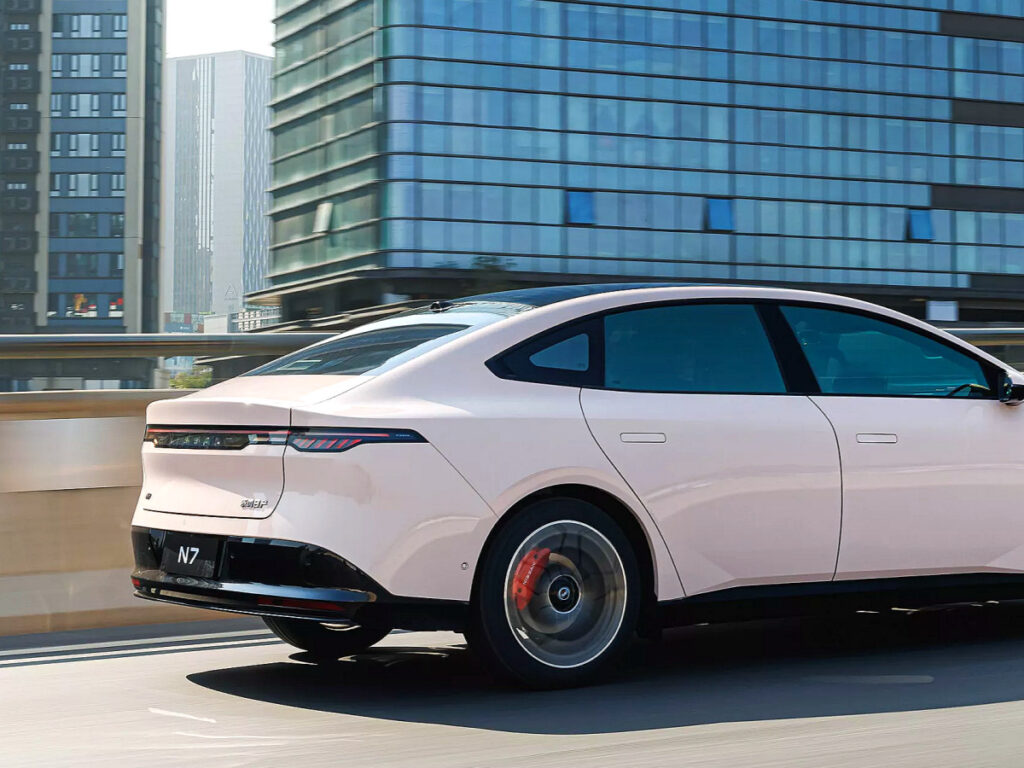
For years, harsh judgments like this echoed as Japanese brands struggled in China’s rapidly evolving electric vehicle market. Recently, however, the narrative has begun to shift.
Nissan is now mounting a vigorous response with its latest electric sedan—the N7. Specifically tailored for Chinese buyers, featuring a competitive price point and advanced digital technologies, the launch of the N7 symbolizes more than just another vehicle announcement.
Revealed officially at Auto Shanghai 2025, the N7 represents a clear statement: Nissan is determined to reclaim its position in a market where Japanese brands have been criticized for lagging behind on electrification. Nissan’s message to the industry is unequivocal—the brand is repositioning itself firmly around market demand.
Deeply Localized Approach at Heart of Nissan’s Strategy

Unlike previous Nissan models, the N7 wasn’t developed in Japan. From the outset, the vehicle’s design was guided by the local development team at Dongfeng Nissan, and it was aimed squarely at Chinese consumer tastes and preferences.
The N7 enters the market as a midsize sedan, measuring 4,930 mm (194.1 inches) in length. Its streamlined, aerodynamic exterior and minimalist interior clearly show influences from market leader Tesla.
Notably, Nissan has integrated China’s digital expertise, adopting the DeepSeek-R1 AI voice assistant and autonomous driving systems from local startup Momenta. This synthesis merges Japan’s reputation for refined automotive design with China’s advanced digital capabilities.
Striking a Balance Between Price and Performance

The N7 sedan lineup offers five trims, available with two battery options: a 58 kWh battery delivering a 510 km (317 miles) range and a larger 73 kWh pack extending range to between 625 and 635 km (388–395 miles). Fast charging capability allows for an 80% capacity replenishment in approximately 19 minutes.
With a maximum power output of 200 kW (approximately 268 horsepower) and an entry-level price of around 16,757 USD, the N7 provides a compelling price-performance ratio relative to competitors. Nissan’s configuration effectively appeals to consumers prioritizing practicality and everyday usability over outright high-performance.
Immediate Market Response: Over 10,000 Pre-Orders

Consumer feedback has been swift and positive—pre-orders surpassed the 10,000-unit mark shortly after the official unveiling. Nissan’s localized strategy resonates strongly with Chinese buyers.
Despite this promising start, the landscape remains challenging. Domestic Chinese brands currently dominate over 70% of the electric vehicle market, leaving joint-venture foreign automakers holding only about a 6% market share. Nissan plans to address this by rolling out five additional electric and plug-in hybrid models by 2026, aiming to solidify its presence.
Why Japanese Vehicles Have Difficulty Achieving Technological Independence

Nissan isn’t alone. Toyota is similarly adopting localized strategies to pursue greater Chinese market penetration. Its recent collaboration with Guangzhou Automobile yielded the BZ3X, an electric crossover heavily relying on local platforms and Momenta’s autonomous driving technology. Priced roughly half of Tesla’s Model Y, the BZ3X couples attractive affordability with luxurious interiors, underscoring a similar philosophy as Nissan’s N7.
The underlying reason for this shift is apparent: Japan’s traditional automotive strengths lie primarily in hardware engineering rather than software and AI innovation. The rapid digitization at the heart of modern EV production has exposed Nissan’s automakerability in software development. Nissan’s N7 and Toyota’s BZ3X illustrate that Japanese companies are now willing to bridge that digital gap through Chinese partnerships.
Ultimately, Nissan’s new N7 represents more than a new product—it signals the industry-wide recognition that pride alone can no longer sustain legacy automakers. How sustainable and effective these partnerships prove will depend heavily on evolving consumer preferences and future market developments.
























